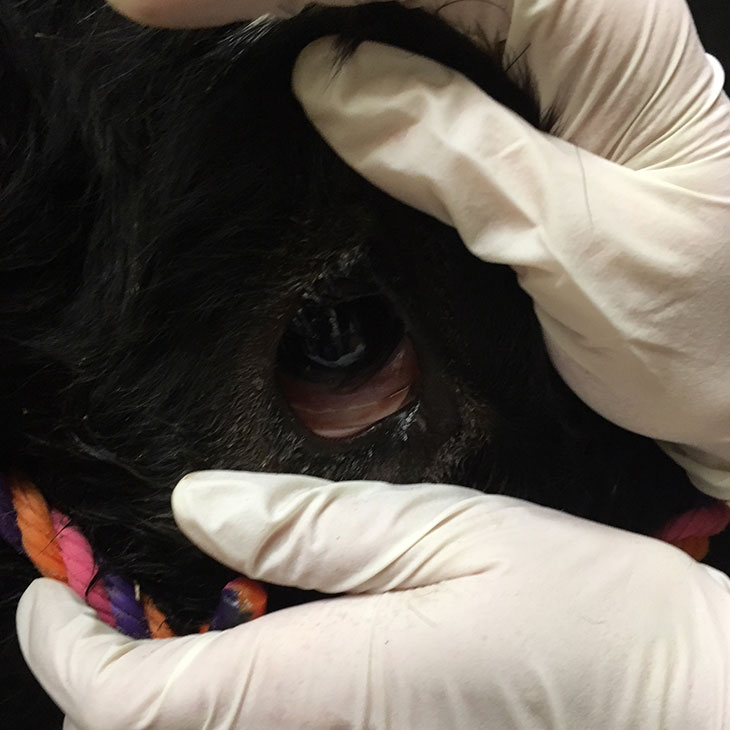
How to assess dehydration in scouring calves
Tuesday, May 28, 2019
Diarrhea or scours is commonly seen in young dairy calves. Regardless of the underlying cause, affected calves typically cannot consume enough milk and drink enough water to keep up with water losses through their gut. This over time, can result in mild, moderate or severe dehydration.
Criteria to assess dehydration status include demeanor, skin tenting, and how sunken the calf’s eyes are. Demeanor ranges from normal (active, standing, nursing well) to depressed (lethargic, prefer to lay down, nursing some) to comatose (non-responsive to their surroundings, down and cannot stand up, refusing to nurse). Skin tenting is done by gently pinching the skin below the eyes and watching whether the “tent” created goes away or persists for a few to several seconds. When assessing a calf for sunken eyes, look for the space (in millimeters) between the lower eyelids and the actual eyeballs. The wider the space between the eyelids and the eyeballs, the more dehydrated the calf is. The following table is a quick reference for the assessment of dehydration in calves.
| Percent Dehydration | Demeanor | Sunken Eye | Skin Tenting |
|---|---|---|---|
| <6% | Normal | None | None |
| 6-8% | Depressed | 2-4 mm | 1-3 seconds |
| 8-10% | Depressed | 4-6 mm | 2-5 seconds |
| 10-12% | Comatose | 6-8 mm | 5-10 seconds |
| >12% | Dead | 8-12 mm | >10 seconds |
Scouring calves with moderate dehydration (<8%) are typically amenable to supportive treatment of oral electrolytes (follow label instructions). Those calves will do best if they have concurrent access to fresh water and are offered small but frequent milk feedings (avoid mixing oral electrolytes with milk). Scouring calves with severe dehydration (≥8%) will need intravenous fluids administered to correct their fluid deficit. This can be done on the farm by your veterinarian or at his or her clinic.
It is important to be proactive in detecting diarrhea and associated dehydration in calves. It is also crucial to identify and address the underlying cause of the diarrhea and treat accordingly. This is best accomplished by your veterinarian. Acting early can make a huge difference between a live or dead calf!
MEDIA CONTACT: Taylor Bacon | Public Relations and Marketing Coordinator | 405-744-6728 | taylor.bacon@okstate.edu
